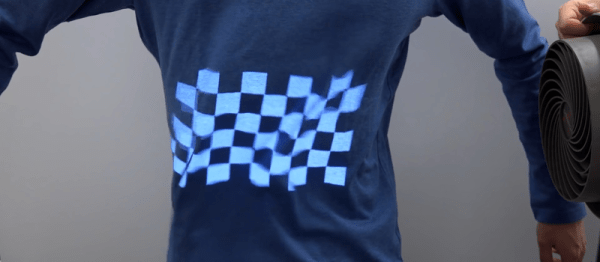Just a few days ago, on the other side of the planet from this author, there was a mechanical keyboard meetup in Tokyo. Fortunately through the magic of the Internet we can all enjoy the impressive collection of devices people brought, and boy were there some interesting specimens. There were certainly the inevitable collections of strange artisan keycaps, unusual handmade switches, and keycap sets only available in one group buy five years ago in Nicaragua. But among the bright colors were some truly unique custom designs the likes of which we haven’t see before. A single source is hard to credit, you could check the hashtag #tokyomk6 on Twitter, or [obra]’s thread of photos, or this great blog post (video walkthroughs and photos included) from [romly].

 Speaking of [romly], one of their designs stands out as particularly unusual. There are a few things to note here. One is the very conspicuous surface profile of the (clearly totally custom) keycaps themselves. Instead of flat or cylindrical or spherical, these are round. Round like the outside of a log. If we didn’t know better it might look like the entire thing was sculpted or extruded as a single unit. And just below the deck are the perpendicular thumb clusters. Frankly we aren’t sure how to refer to this design feature. The switches are mounted at right angles facing inward so the user places a thumb inside it in a style reminiscent of the DataHand. It’s quite interesting, and we’d be love to know more about what specific functionality it provides.
Speaking of [romly], one of their designs stands out as particularly unusual. There are a few things to note here. One is the very conspicuous surface profile of the (clearly totally custom) keycaps themselves. Instead of flat or cylindrical or spherical, these are round. Round like the outside of a log. If we didn’t know better it might look like the entire thing was sculpted or extruded as a single unit. And just below the deck are the perpendicular thumb clusters. Frankly we aren’t sure how to refer to this design feature. The switches are mounted at right angles facing inward so the user places a thumb inside it in a style reminiscent of the DataHand. It’s quite interesting, and we’d be love to know more about what specific functionality it provides.
 Another interesting entrant is this keyboard with unusually staggered switches and hexagonal caps (check out the individual markings!). Very broadly there are two typical keyboard layout styles; the diagonal columns of QWERTY (derived from a typewriter in the 1800’s) or the non slanted columns of an “ortholinear” or matrix style layout. By those metrics this is something like an ortholinear keyboard in that its switches overlap their neighbors by half, but the edge to edge close packed caps imply that it might be something else. We’d be very interested to know how typing on this beast would be!
Another interesting entrant is this keyboard with unusually staggered switches and hexagonal caps (check out the individual markings!). Very broadly there are two typical keyboard layout styles; the diagonal columns of QWERTY (derived from a typewriter in the 1800’s) or the non slanted columns of an “ortholinear” or matrix style layout. By those metrics this is something like an ortholinear keyboard in that its switches overlap their neighbors by half, but the edge to edge close packed caps imply that it might be something else. We’d be very interested to know how typing on this beast would be!
There were so many more awesome designs present at the meetup that this would never end if we tried to document them all. Take a look through the posts and call out anything else too excellent to go unnoticed!
Thanks [obra] for Tweeting about this so we could discover it.














